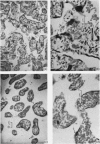Abstract
1. Placentas from normal women and from those with pre-eclamptic toxaemia, taken immediately after labour, were examined for oxytocinase activity and analysed morphometrically.
2. Both enzyme activity and volume of syncytiotrophoblast were significantly reduced in placentas from patients with toxaemia.
3. There was a positive correlation between the enzyme activity and the proportion of trophoblast in the placenta. When the activity was expressed per unit volume trophoblast, there was very little difference between placentas, whether from normal subjects or from patients with toxaemia.
4. It is concluded that human placental oxytocinase is located in the syncytiotrophoblast.
Full text
PDF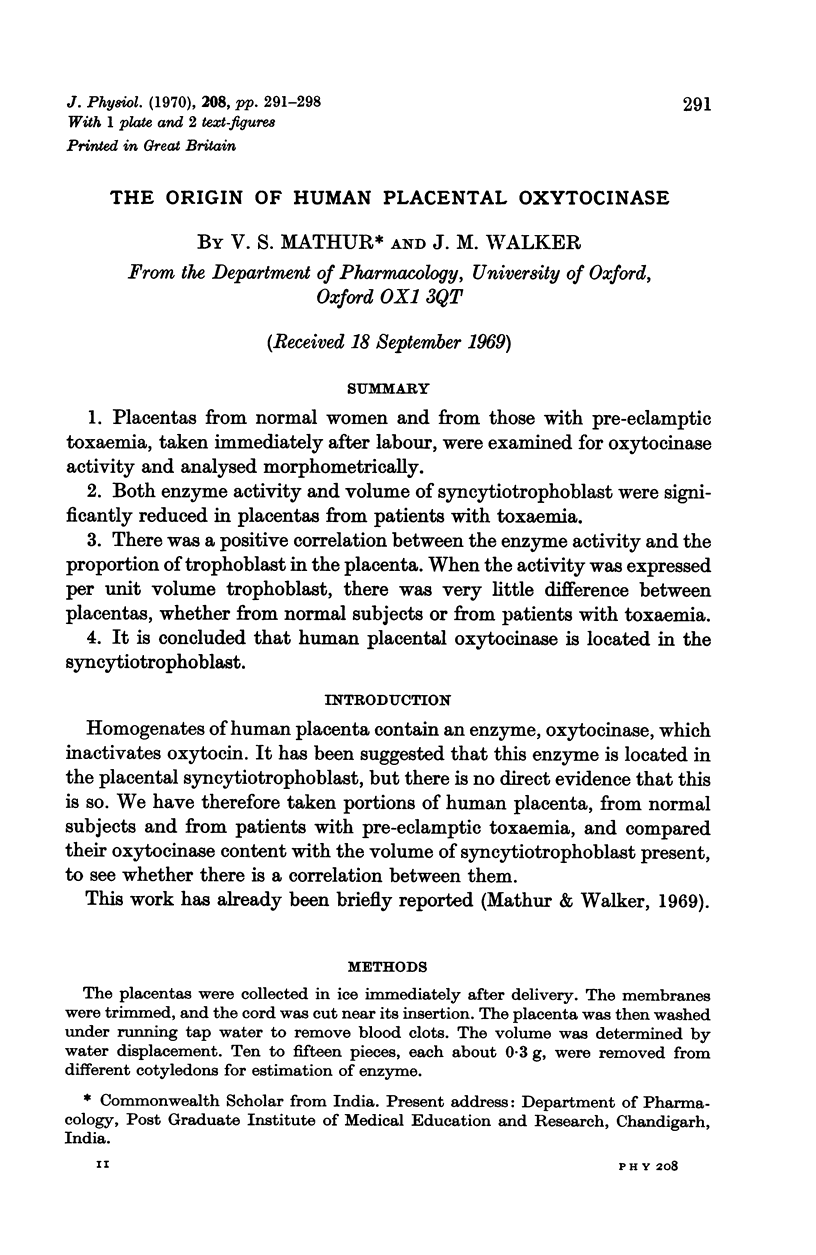
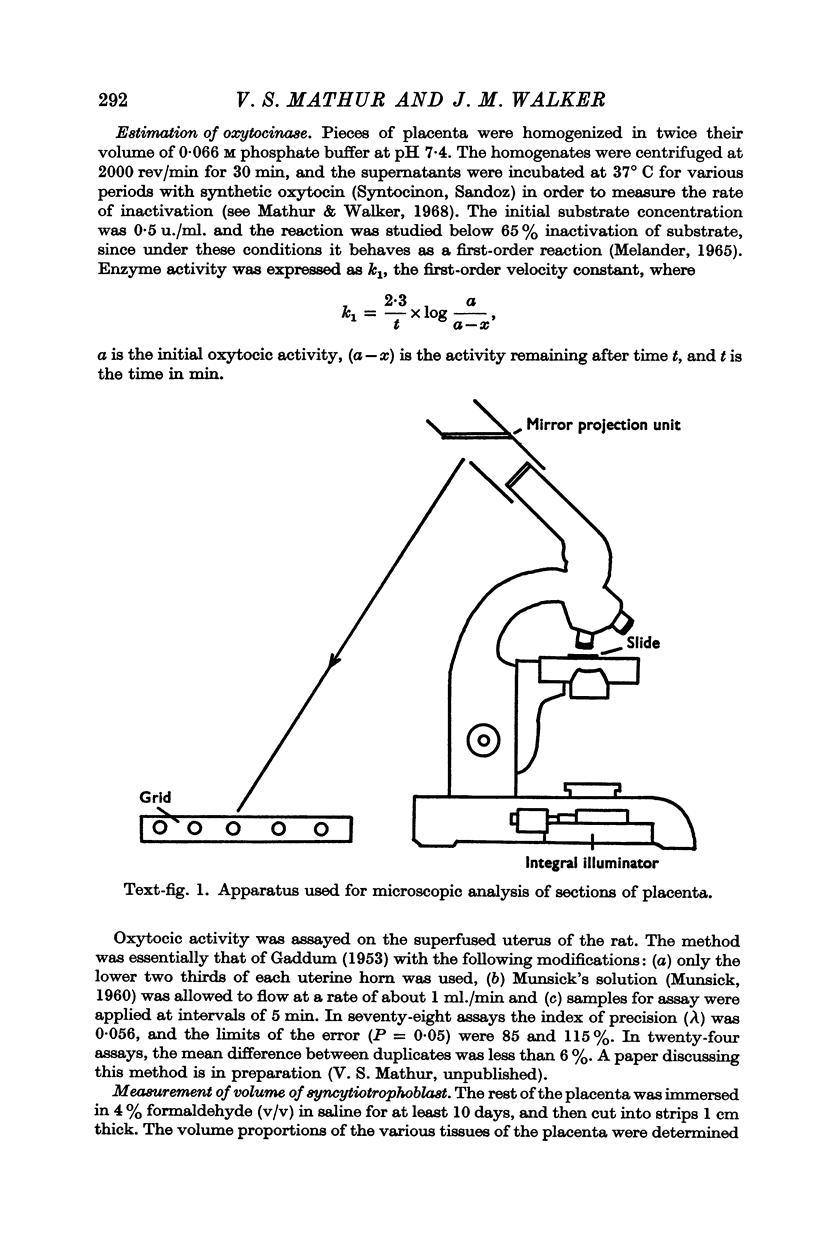
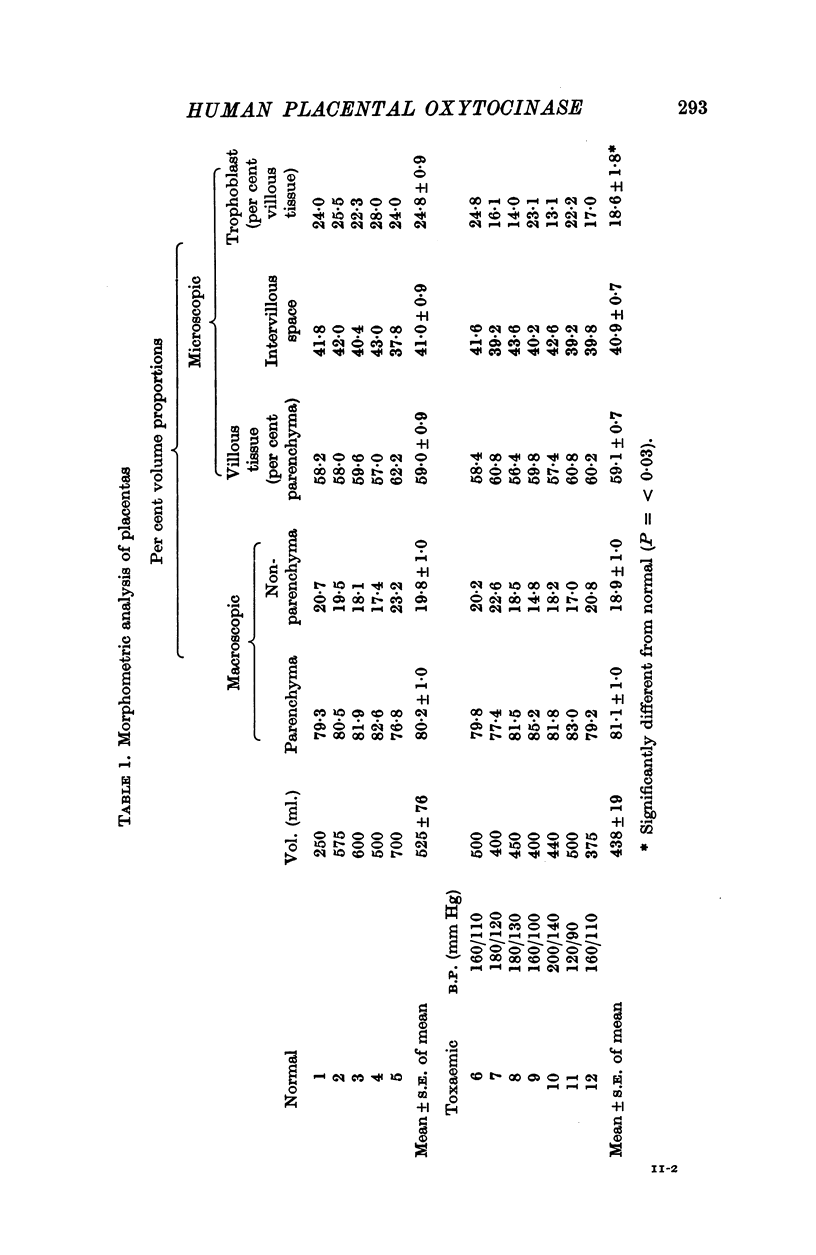
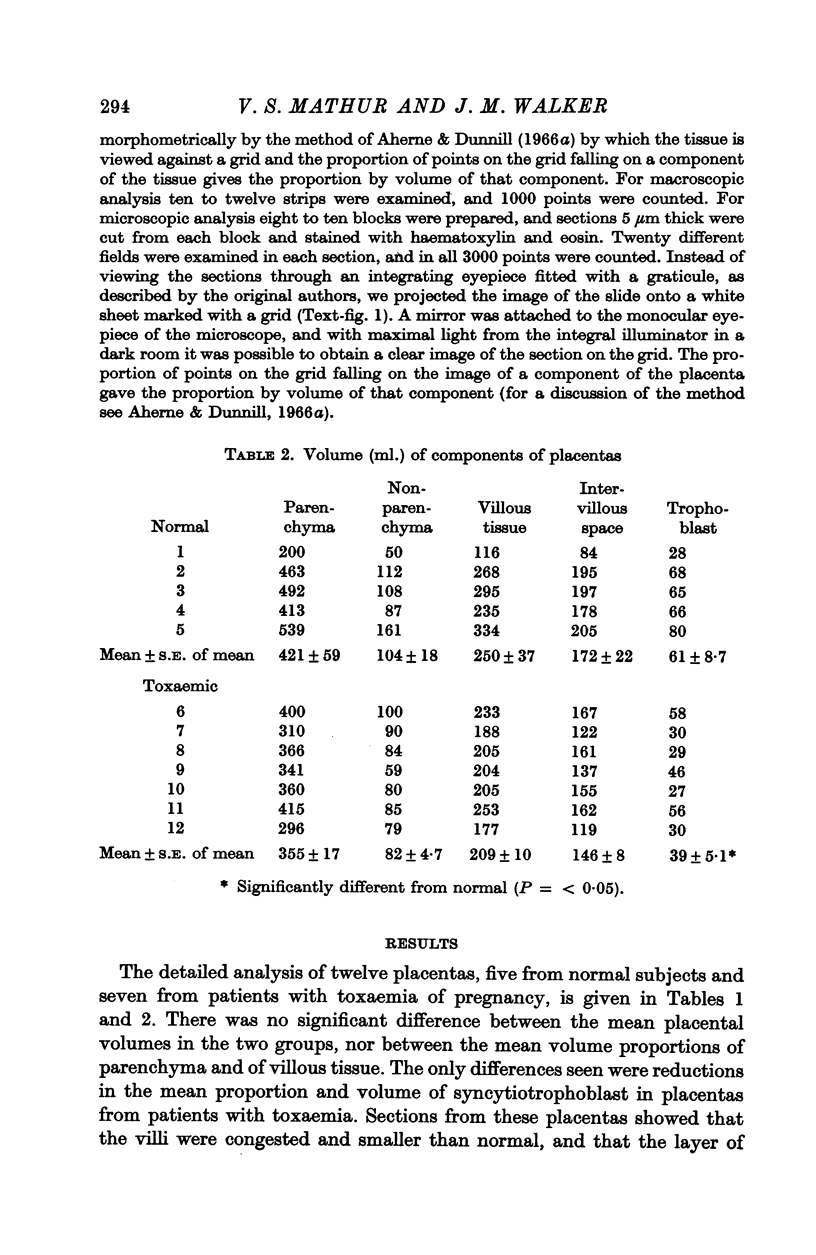
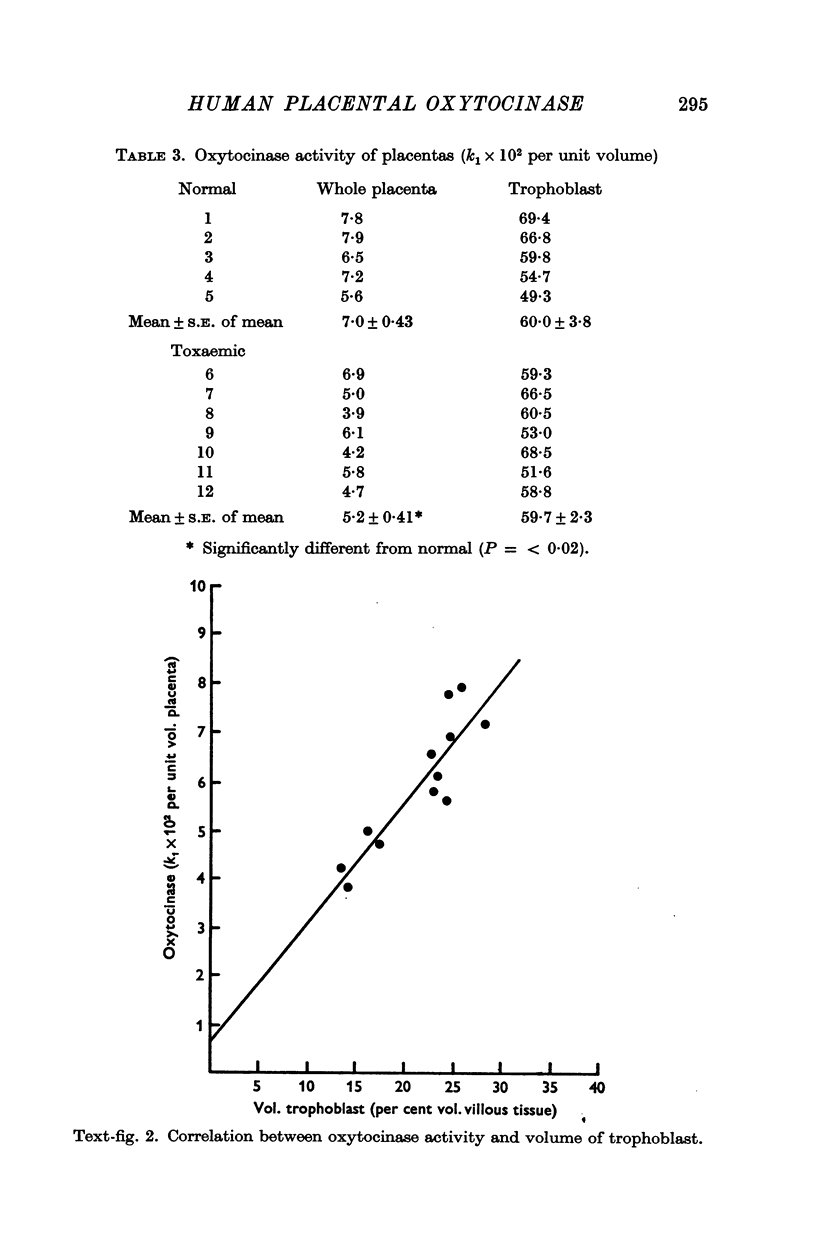
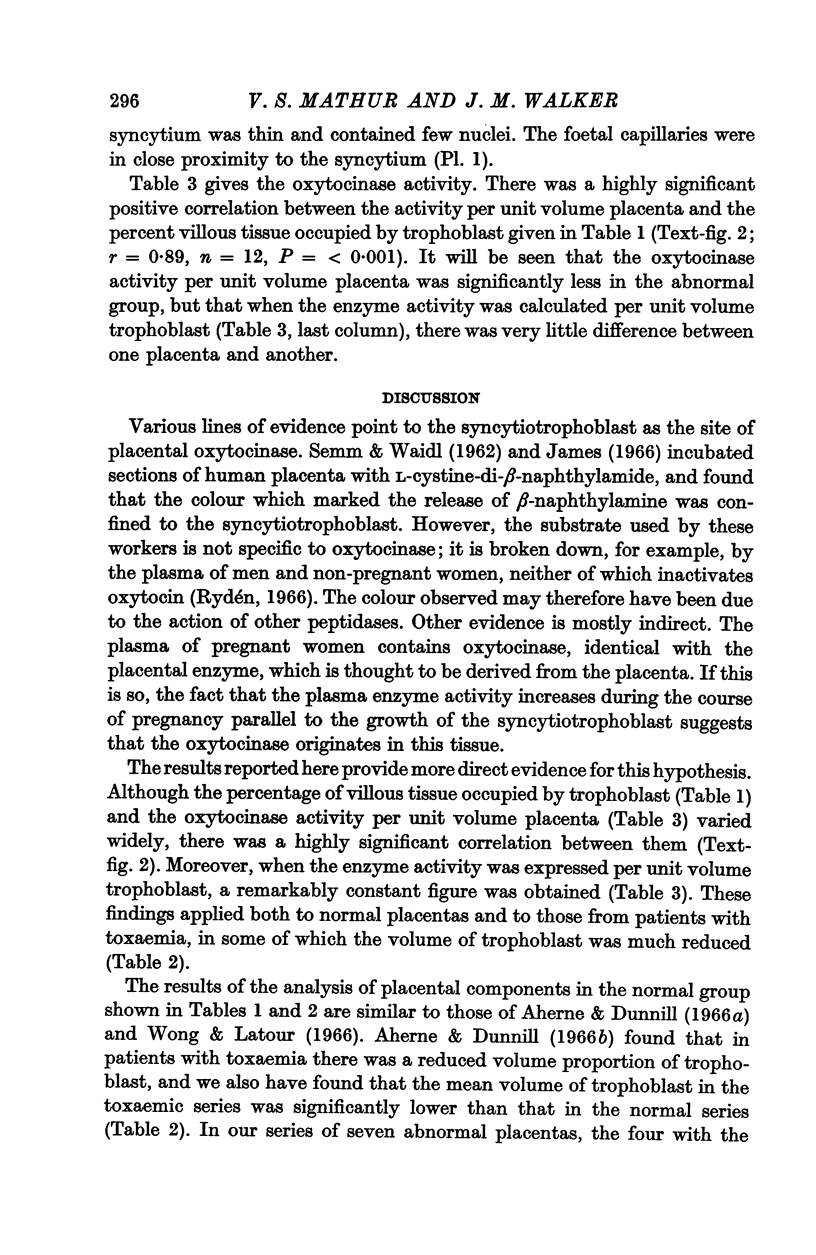
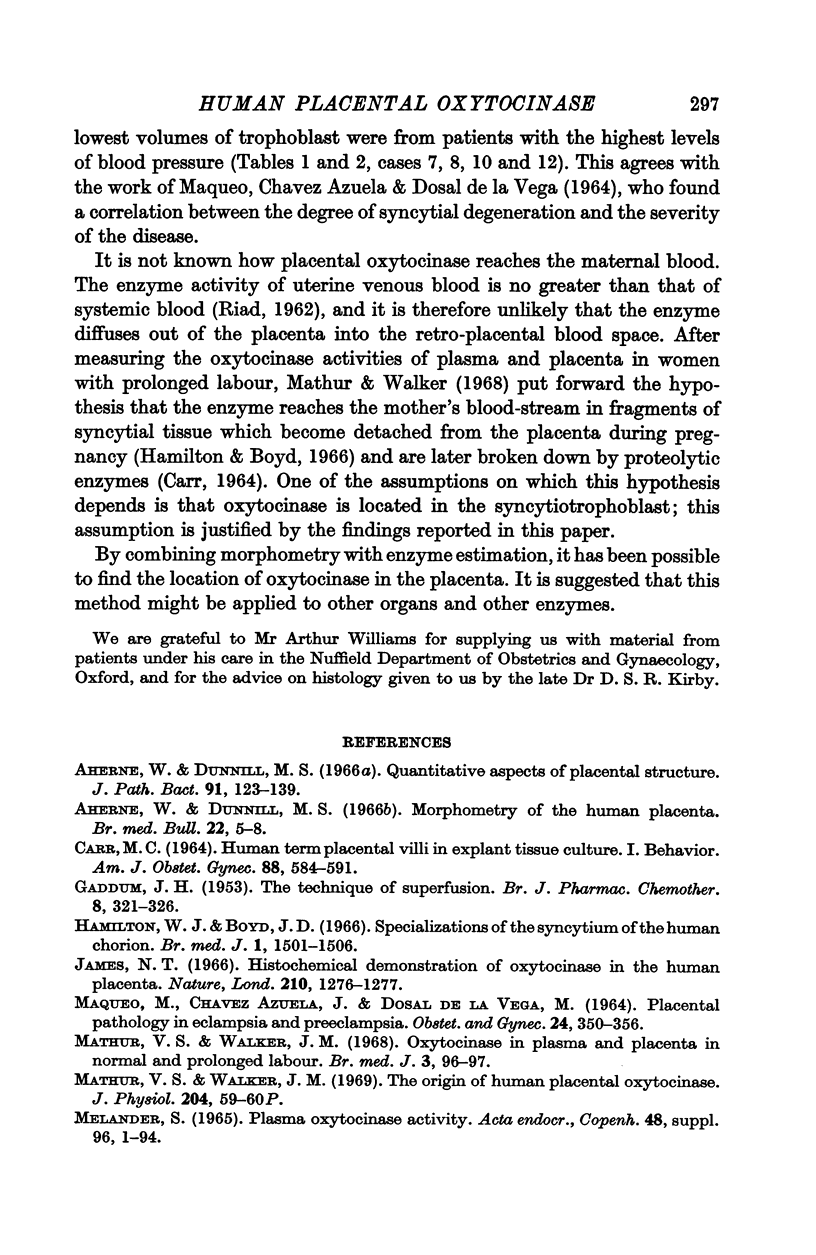
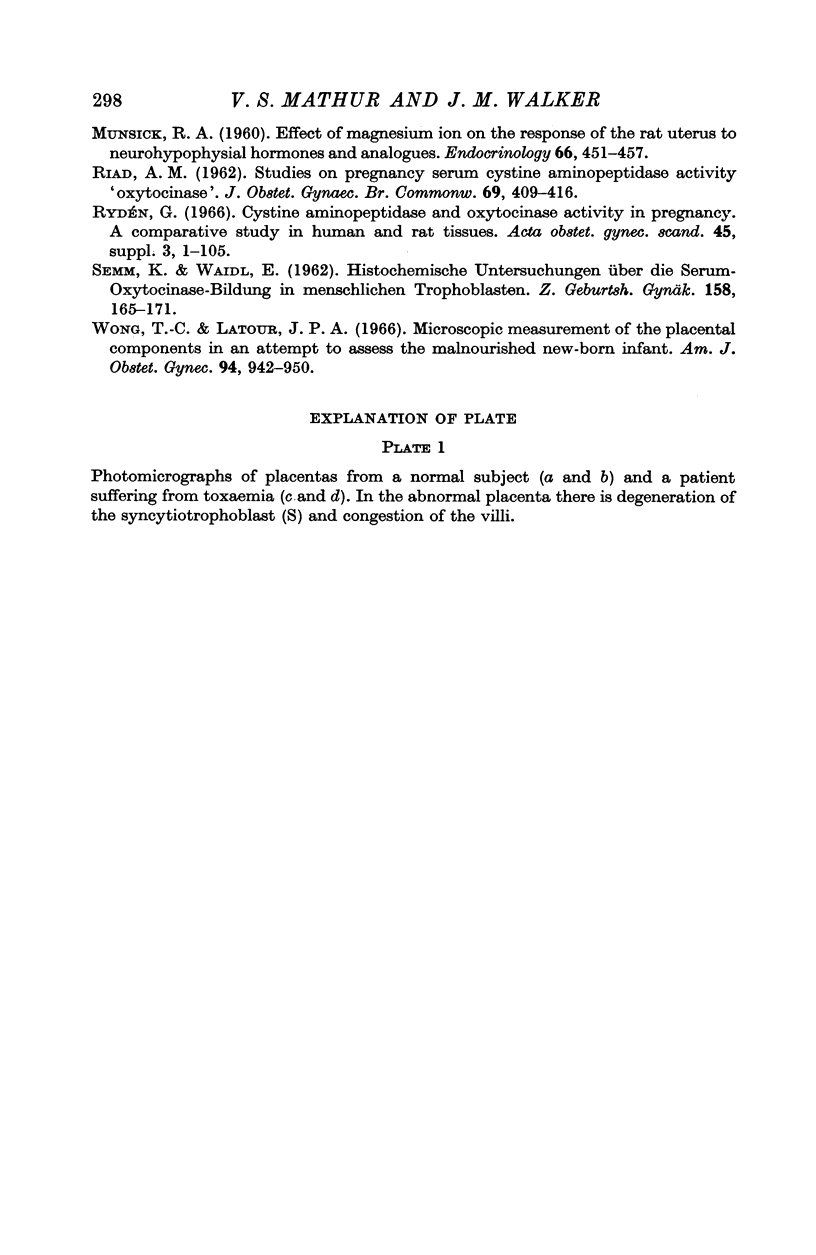
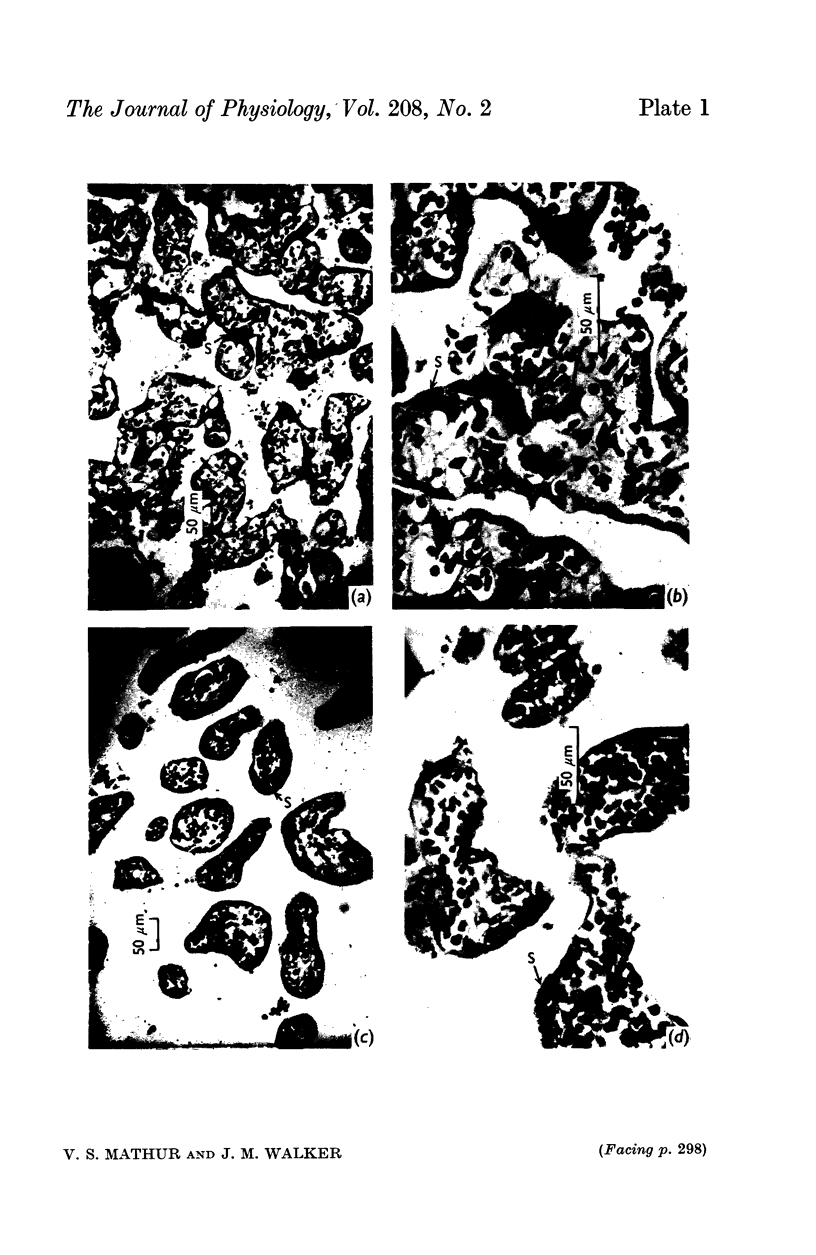
Images in this article
Selected References
These references are in PubMed. This may not be the complete list of references from this article.
- Aherne W., Dunnill M. S. Morphometry of the human placenta. Br Med Bull. 1966 Jan;22(1):5–8. doi: 10.1093/oxfordjournals.bmb.a070437. [DOI] [PubMed] [Google Scholar]
- Aherne W., Dunnill M. S. Quantitative aspects of placental structure. J Pathol Bacteriol. 1966 Jan;91(1):123–139. doi: 10.1002/path.1700910117. [DOI] [PubMed] [Google Scholar]
- CARR M. C. HUMAN TERM PLACENTAL VILLI IN EXPLANT TISSUE CULTURE. 1. BEHAVIOR. Am J Obstet Gynecol. 1964 Mar 1;88:584–591. doi: 10.1016/0002-9378(64)90884-1. [DOI] [PubMed] [Google Scholar]
- GADDUM J. H. The technique of superfusion. Br J Pharmacol Chemother. 1953 Sep;8(3):321–326. doi: 10.1111/j.1476-5381.1953.tb00801.x. [DOI] [PMC free article] [PubMed] [Google Scholar]
- Hamilton W. J., Boyd J. D. Specializations of the syncytium of the human chorion. Br Med J. 1966 Jun 18;1(5502):1501–1506. doi: 10.1136/bmj.1.5502.1501. [DOI] [PMC free article] [PubMed] [Google Scholar]
- James N. T. Histochemical demonstration of oxytocinase in the human placenta. Nature. 1966 Jun 18;210(5042):1276–1277. doi: 10.1038/2101276a0. [DOI] [PubMed] [Google Scholar]
- MAQUEO M., CHAVEZAZUELA J., DOSALDELAVEGA M. PLACENTAL PATHOLOGY IN ECLAMPSIA AND PREECLAMPSIA. Obstet Gynecol. 1964 Sep;24:350–356. [PubMed] [Google Scholar]
- MUNSICK R. A. Effect of magnesium ion on the response of the rat uterus to neurohypophysial hormones and analogues. Endocrinology. 1960 Mar;6:451–457. doi: 10.1210/endo-66-3-451. [DOI] [PubMed] [Google Scholar]
- Mathur V. S., Walker J. M. Oxytocinase in plasma and placenta in normal and prolonged labour. Br Med J. 1968 Jul 13;3(5610):96–97. doi: 10.1136/bmj.3.5610.96. [DOI] [PMC free article] [PubMed] [Google Scholar]
- Mathur V. S., Walker J. M. The origin of human placental oxytocinase. J Physiol. 1969 Oct;204(2):59P–60P. [PubMed] [Google Scholar]
- RIAD A. M. Studies on pregnancy serum cystine aminopeptidase activity "oxytocinase". J Obstet Gynaecol Br Emp. 1962 Jun;69:409–416. doi: 10.1111/j.1471-0528.1962.tb01169.x. [DOI] [PubMed] [Google Scholar]
- Rydén G. Cystine aminopeptidase and oxytocinase activity in pregnancy. A comparative study in human and rat tissues. Acta Obstet Gynecol Scand. 1966;45(Suppl):1–105. [PubMed] [Google Scholar]
- SEMM K., WAIDL E. [Histochemical studies on serum oxytocinase formation in human trophoblasts]. Z Geburtshilfe Gynakol. 1962 Mar;158:165–171. [PubMed] [Google Scholar]
- Wong T. C., Latour J. P. Microscopic measurement of the placental components in an attempt to assess the malnourished newborn infant. Am J Obstet Gynecol. 1966 Apr 1;94(7):942–950. doi: 10.1016/0002-9378(66)90032-9. [DOI] [PubMed] [Google Scholar]



